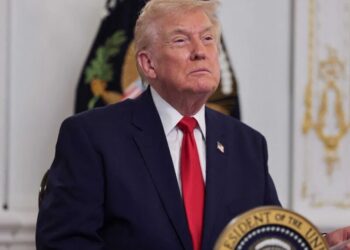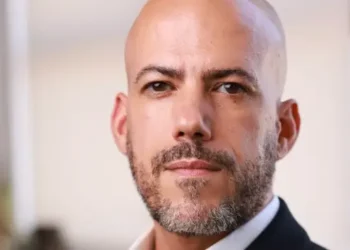While most 14-year-olds are folding paper airplanes, Miles Wu is folding origami patterns that he believes could one day improve disaster relief.
The New York City teen just won $25,000 for a research project based on an origami fold called Miura-ori, which is known for collapsing and expanding with precision.
“I’ve been folding origami as a hobby for more than six years, mostly of animals or insects,” Wu told Business Insider. “Recently I’ve been designing my own origami, too.”
For his project, which won the top prize at the Thermo Fisher Scientific Junior Innovators Challenge in October, Wu spent months determining whether the strength-to-weight ratio of the Miura fold can be leveraged to improve deployable structures used in emergency situations.
Essentially, Wu tested how much weight the Miura fold could handle across different types of paper, parallelogram heights, parallelogram widths, and parallelogram angles.
Wu got the idea while learning about natural disasters, like January’s wildfires in Southern California and Hurricane Helene, which hit the Southeast US in 2024. He also studied how people use origami in STEM disciplines, including the medical field.
“A problem with current deployable structures and emergency structures is, for example, tents are sometimes strong, sometimes they can compact really small, and sometimes they’re easily deployable, but almost never are they all three, but Miura-ori could potentially solve that problem,” Wu said.
“I found that Miura-ori was really strong, light, and folds down really compactly.”
Business Insider’s Young Geniuses series spotlights the next generation of founders, innovators, and thinkers trying to reshape industries and solve global challenges. See more stories from the series here, or reach out to editor Jessica Orwig to share your story.
Wu tested 54 variations and underwent 108 trials
When using the Miura-ori, a sheet of paper is folded into a smaller area with repeating parallelograms.
To figure out the winning combination, Wu tested three different parallelogram widths, three different parallelogram angles, and two different parallelogram heights. He also tested three different types of paper.
That means Wu tested 54 hand-folded variations and oversaw 108 trials.
“After folding them with the help of a cutting machine for accuracy, I placed them between guardrails to keep my experimentation the same throughout my trials,” Wu said. “Then, I placed a lot of heavy weights on top.”
Wu would gradually place more weight atop each test variation until they collapsed. To his surprise, the origami variations were quite strong. He used every book in his home as a weight before having to ask his parents to purchase exercise weights for his research.
Wu believed “smaller, less acutely angled panels made of heavier material would yield a greater strength-to-weight ratio.”
By the end of his trials, his hypothesis was partially correct. While small and less acutely angled panels showed a better strength-to-weight ratio, Wu found that copy paper — not heavier materials —had the strongest strength-to-weight ratio.
“The final statistic I got about the strongest Miura-ori that I tested was that it could hold over 10,000 times its own weight,” Wu said. “I calculated that to be the equivalent of a New York City taxi cab holding over 4,000 elephants.”
Wu took the top prize at the competition in Washington, D.C.
Taking top prize at the Thermo Fisher Scientific Junior Innovators Challenge is no small feat. To apply, middle schoolers must compete at local science or engineering fairs, where judges nominate the top 10% of projects.
Of the 2,000 or so applicants, judges select 300 before narrowing it down to just 30. Those 30 kids then travel to Washington, D.C., where they present their work and participate in challenges.
Those challenges play a role in how judges decide who will take home an award.
Maya Ajmera, the president and CEO of the Society for Science, which collaborates with Thermo Fisher Scientific to host the competition, told Business Insider that Wu excelled in those challenges.
“We’re not only looking at their project. We’re looking at do they deal with creative problem solving, how they deal with setbacks, how they bring everyone in a collaborative mode,” Ajmera said. “Not only did Miles have an extraordinary project, but he shined as a leader in these challenges.”
To Ajmera, introducing STEM education to young people is imperative.
“We’re looking for the next generation of innovators,” Ajmera said.
Ajmera said that many of the kids participating in the competition are considering careers in STEM fields.
“That is really important for global competitiveness as the United States, being the global leader of innovation and also solving the world’s most intractable problems,” Ajmera said. “I think we have a duty to really nurture the curiosity.”
Wu said he and his parents decided to put the $25,000 award toward higher education. Although it’s been nearly a month since Wu won, he’s already thinking ahead about how to bring his vision to life.
“One thing I really want to look into is prototyping one of these Muira-ori to create a real emergency shelter that could be used in real-life situations and actually help people,” Wu said. “But overall, I would love to keep working on origami-related research. Not only Miura-ori folds, but origami as a whole, and in other fields, too.”
Read the original article on Business Insider
The post A 14-year-old won $25,000 for origami. He discovered a pattern that can hold 10,000 times its own weight, he says. appeared first on Business Insider.




